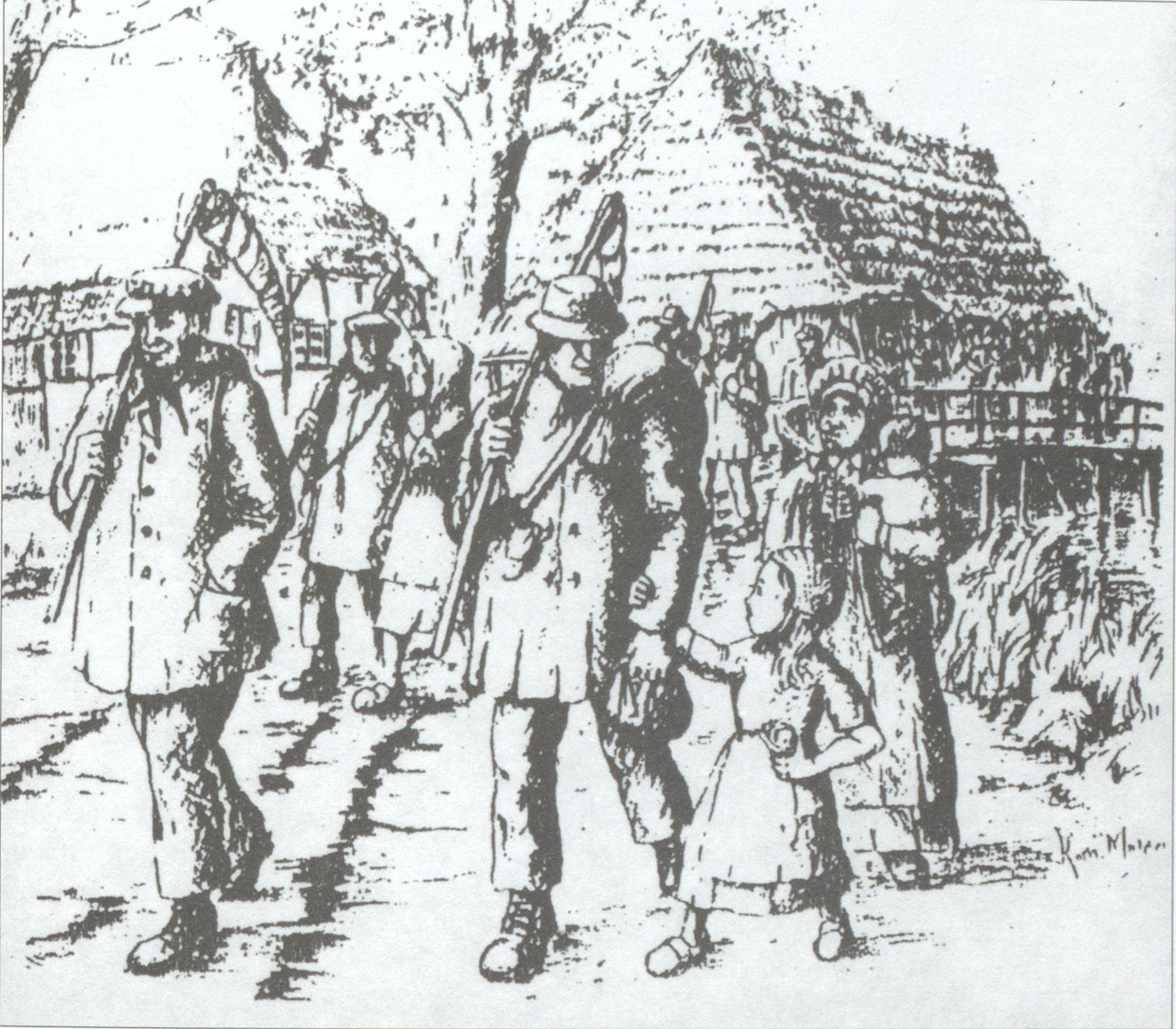Itinerant Laborers from Lengerich in Holland (1802)
Abstract
In this text, a pastor from Lengerich in the Emsland region describes the seasonal migration of labor to the Netherlands, known as “Hollandgängerei.” In the eighteenth and nineteenth centuries the Emslanders found work in the Netherlands mainly as peat cutters and grass cutters.
Source
Bailiff Petri of Lengerich reported to the government on September 1, 1802: “For years now, a good deal has been said and written about laborers traveling to Holland, but given all that I know, I believe that the suggested premiums will do nothing to inhibit the practice, and also that its total elimination, were it possible, would necessarily lead to the utter impoverishment of the entire northwestern county of Lingen.
For where should all the money come from that the province raises annually, if it was not brought in mainly from Holland? The district of Lengerich alone yields some 30,000 florins in taxes and more than an additional 10,000 florins from private estate owners and clerics. With a population of some 4,500 persons, this constitutes around 5 thalers per capita and of all this money scarcely 5,000 florins remain in the province, so that within thirty years more than one million florins in cash have left the country simply from within the district of Lengerich.
How could a country not exactly favored by Nature, the majority of whose surface consists of bare sand and heathland, which provides no products for factories or manufactures and also is not conveniently located for trade, possibly compensate for such a large annual cash outflow through domestic industry? And what are the farm laborers, small farmers, tradesmen, and farm boys and girls of Lengerich district supposed to do in order to amass the ca. 25,000 florins cash every year?
This problem cannot easily be solved, for it is certain that more than 25,000 florins flow into Lengerich yearly from Holland. We have some 300 farm laborer families and of those – in addition to small farmers, such tradesmen as carpenters, tailors, cobblers and smiths, as well as farm boys and girls – nearly 500 persons go to Holland every year and stay between six weeks and one-half to three-quarters of a year. Almost none of them earn less than 30-50 florins, most of them more than 50, indeed many 60, 70, 90 to 100 florins and far more, so that one can assume average earnings of 50 florins for 500 persons, which amounts to 25,000 florins.
In the period between Easter and the feast of St. James, when he has nothing to do at home, a farm laborer can earn enough to pay his farmer the rent, and during that same period the small farmer stays there, returning home at harvest time with earnings that he can use to pay his feudal duties and have some left over for the winter. The tradesman stays there as long as he has work and often earns more in a week than here in a month. The farm boys and girls, too, who usually stay away until the autumn, earn good money, part of which they use to support their parents and siblings here, and part of which they save as a dowry for their future home.
The province is too poorly endowed by nature to exist without income from outside, and the smallest earnings in Holland cannot have such great disadvantages, since the country has been doing very well for years now. I by no means intend to assert that one should neglect domestic industry and support for it, but one also need offer no premiums to reduce seasonal migration to Holland, since those capable of earning an honest living at home certainly do not travel to Holland to perform hard and dirty labor.
The increase in domestic agriculture through the distribution of common lands and the settlement of new farmers is the best means of keeping locals at home, and as this increases domestic production and prosperity, the practice of migrating to Holland for work will diminish.”
According to Pastor Meyer
Source: Lengericher Geschichte(n), no. 2, Heimatverein für das alte Kirchspiel Lengerich e.V. Lengerich, 1996, pp. 2-3. Available online at: http://www.heimatarchiv.de/lengerich/hollandgaenger.html
